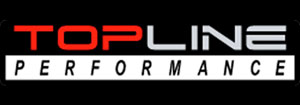Choosing An Axle For Your Off Road Truck
While shopping for off road axle for your truck, many people follow the rule “bigger is better.” Off road stores will carry many varieties of replacement axle shafts, and you need to understand that there is much more to the equation than just the size of the axle. You need to consider the below factors while checking out an off road store for an axle for your off road truck.
Spline Count
This is the number of splines on the carrier or the shaft. It is very much important for the carrier and shaft to have the same number of splines, else they will not fit properly and the splines can break easily. The general rule in the case is that the more the number of splines stronger will be the axle. The spline count together with the other factors discussed below determines the strength of the axle.
Material
You need to understand that not all the axles are made equal, and the stock axles of your truck might not be strong enough to handle the stress of off roading. You will be able to find replacement axles made from three different materials like:
Carbon-Steel – Carbon steel is the material used in stock axles. These axles are strong enough to handle the daily drive needs; however, they will not withstand the stress of off road tracks and trails.
High Carbon Steel – These replacement axles can offer many tensile advantages over carbon-steel axles due to the heat treatment and the added silicon. These axles are a good budget option; however, you might need to upgrade to serious off roading.
Chromoly – Chromoly is a blend of chromium, molybdenum, and nickel and axles made from chromoly are very strong and much resistant to corrosion. Material blends starting with 4xxx are chromoly, the most common one being 4340.
Spline Shape
Axle splines are usually available in two shapes, involute, and square. Square splines have precise shapes with 90° angles with the same width at the base and top of the spline. On the other hand, involute splines are wide at the base than at the top and will have curved faces to offer optimum distribution of pressure and contact between the parts.
Square splines are not used much these days as they are weaker than the involute counterparts. The shape of these splines leads to concentration of stress between the carrier and the shaft increasing the chances of breaking or stripping.

